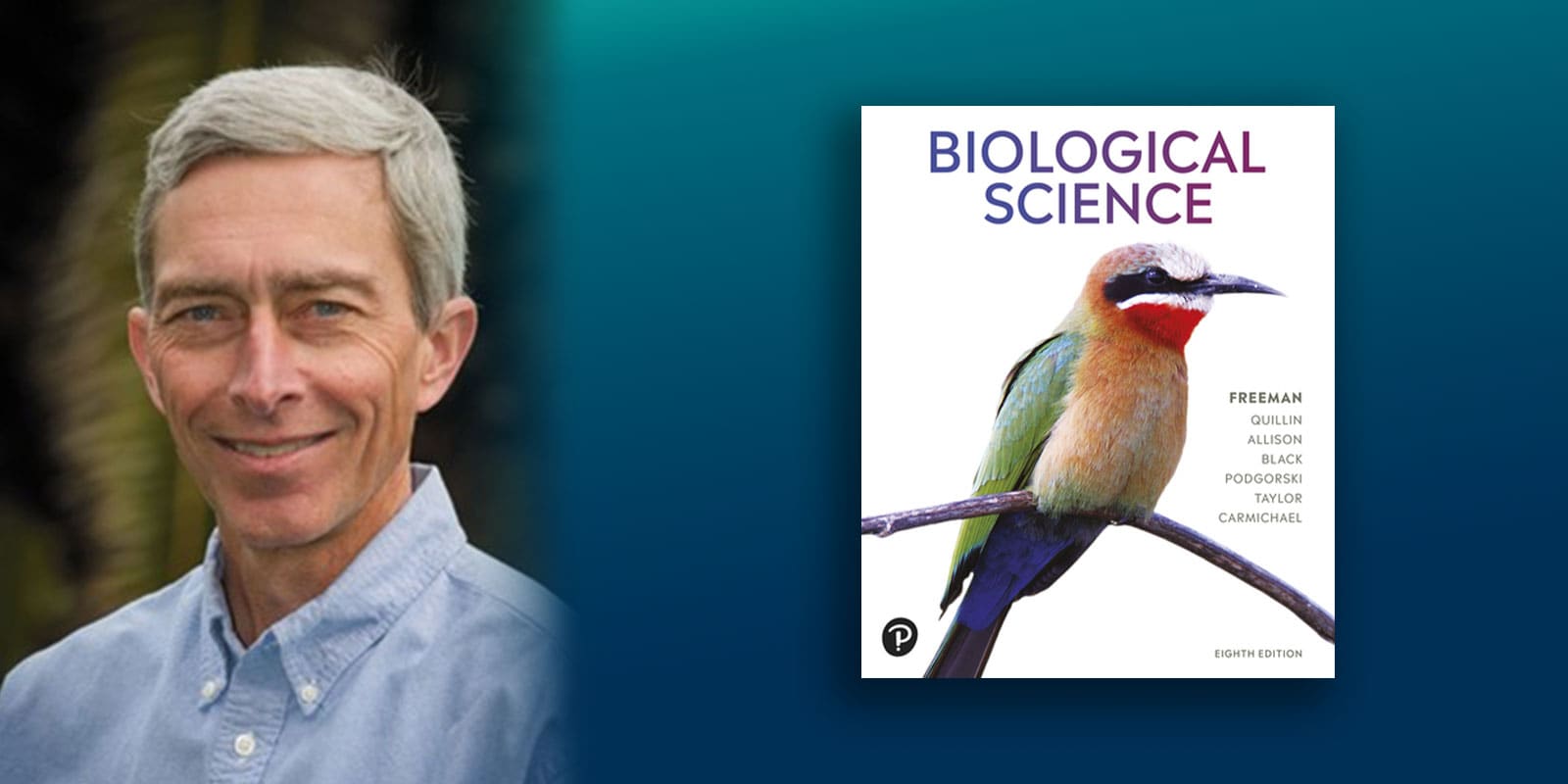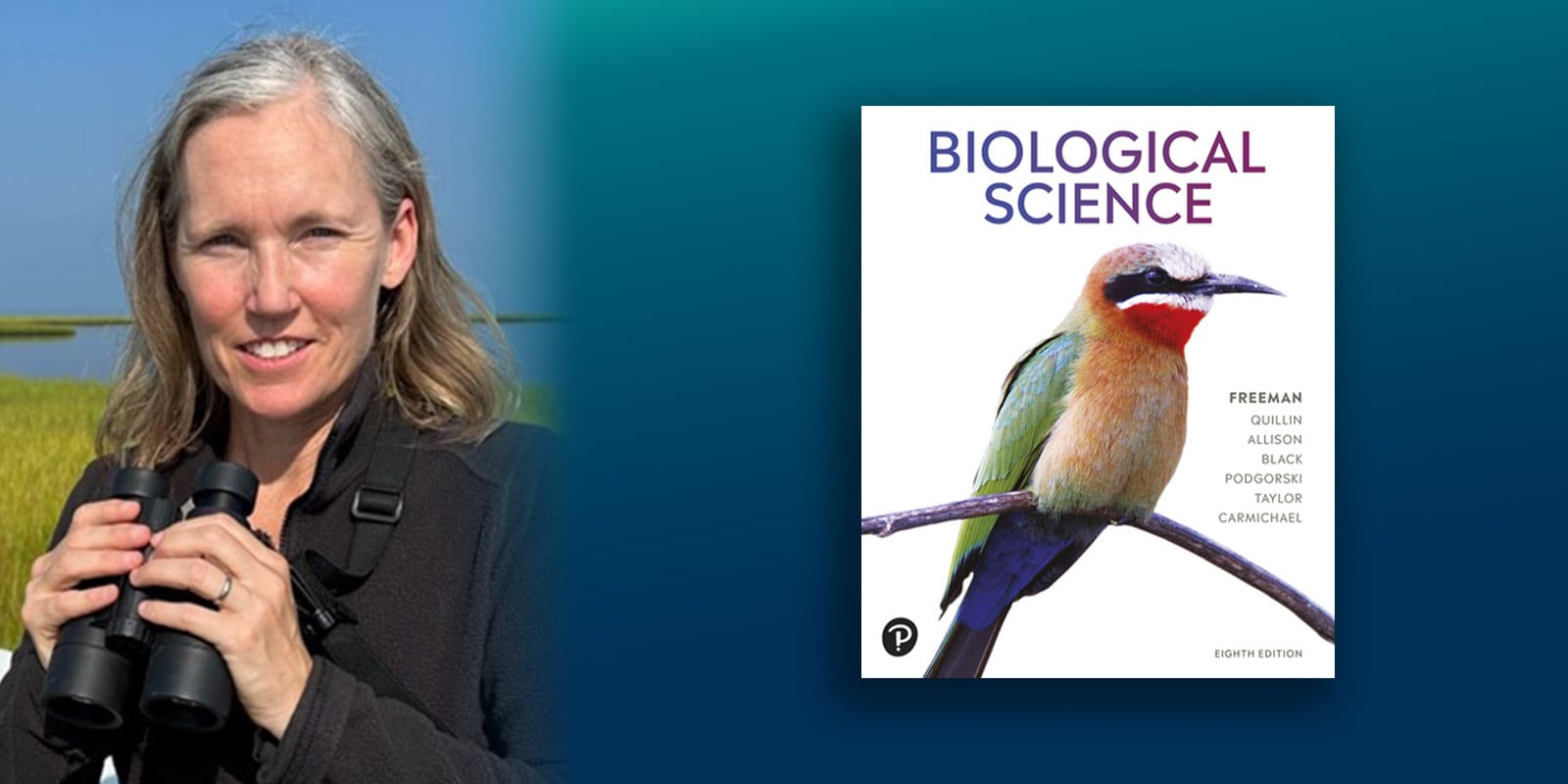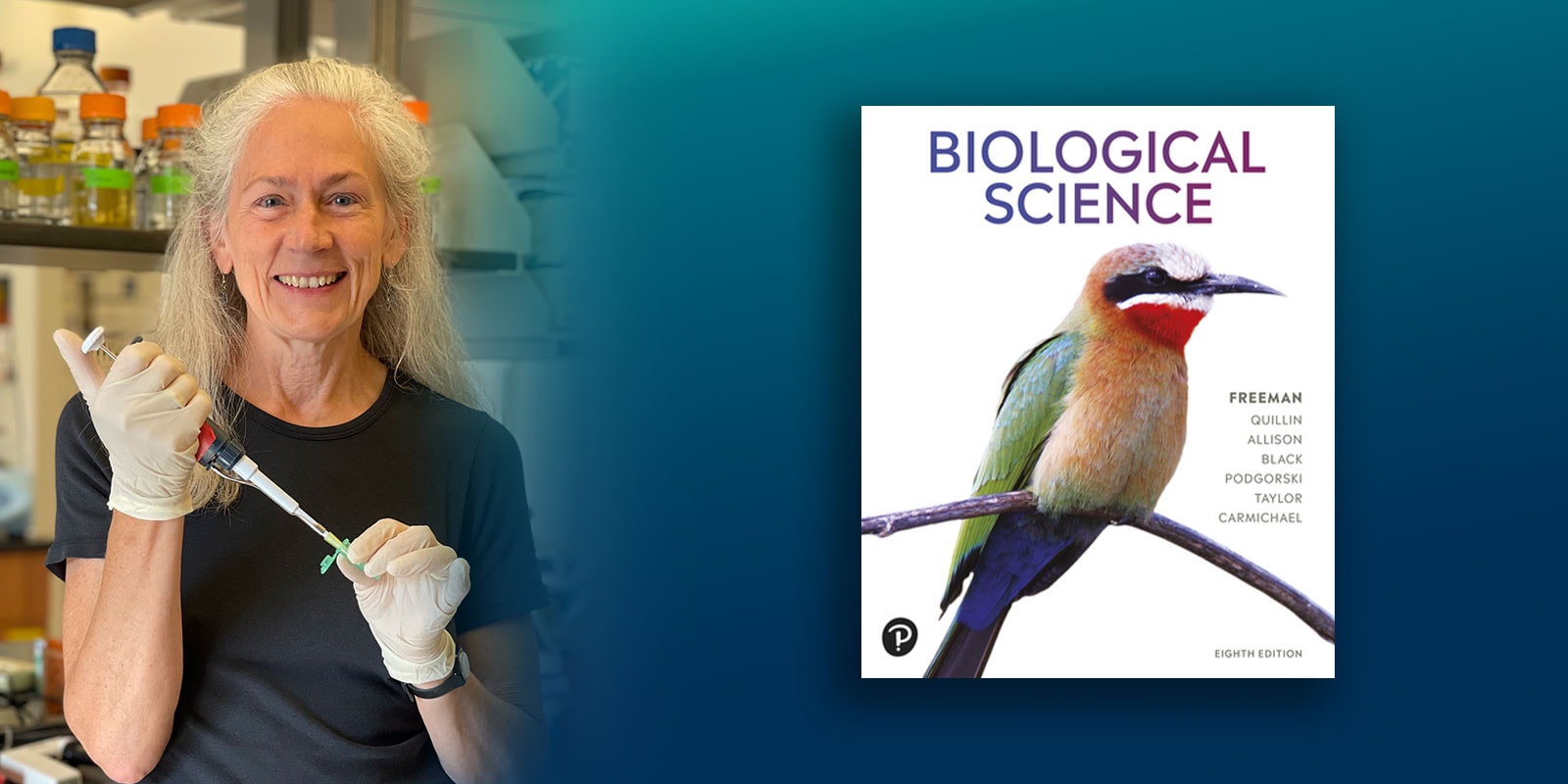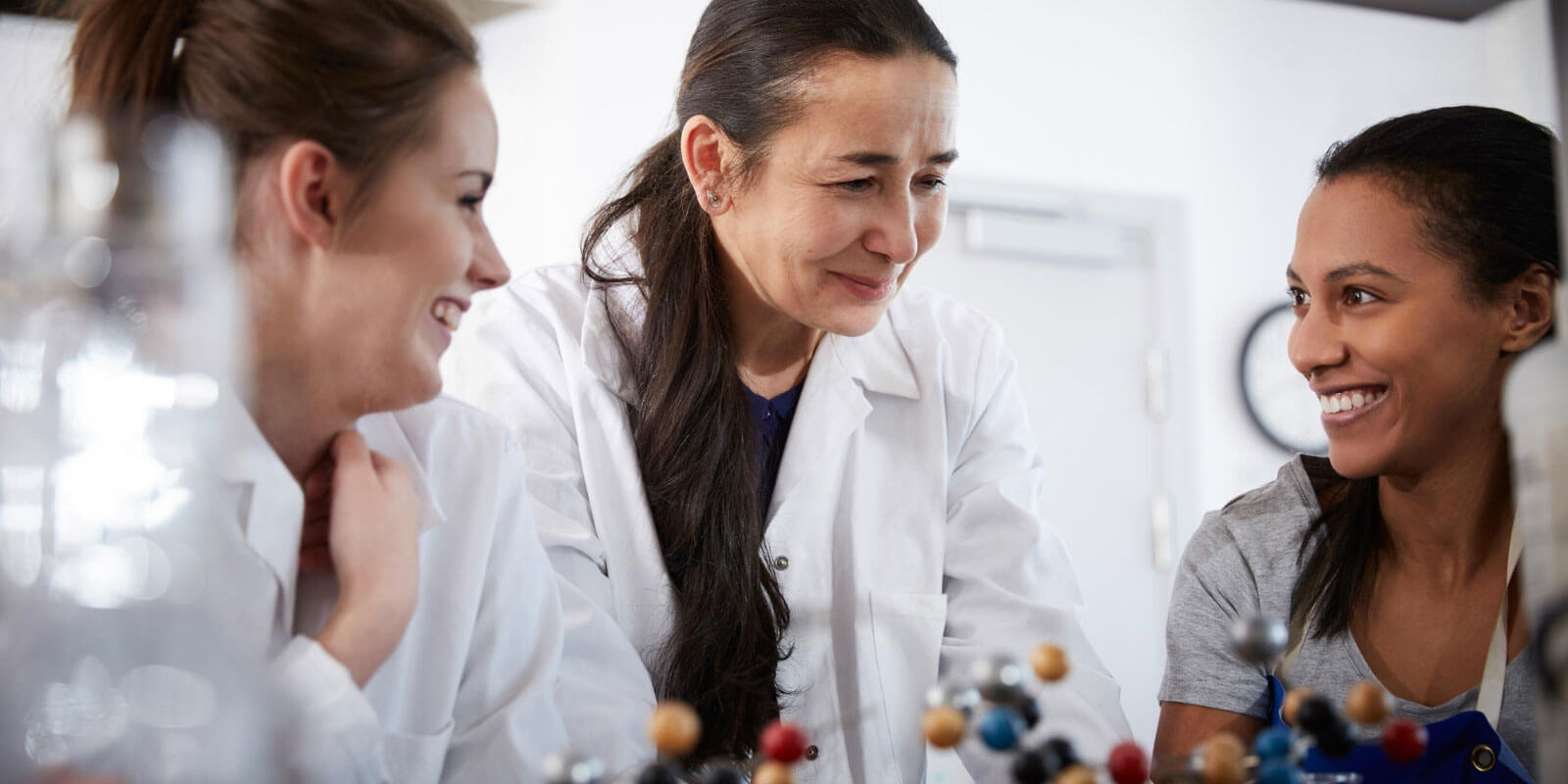What course(s) do/did you teach and where?
Kim: I designed, coordinate, and teach Biology 202: Introduction to Biology: Evolution and Ecology at Salisbury University in Maryland.
What is a challenge that you’re currently facing in the classroom? How did/do you try to overcome this challenge?
Kim: Some students are thriving in college but others are struggling in diverse ways: mental health challenges such as depression, social anxiety, and climate anxiety; social injustice; financial insecurity and food insecurity; working long hours at jobs; navigating college as first-generation students and transfer students; neurodiversity challenges, and so on, some experiencing a high level of intersectionality of marginalized identities.
To address these challenges I employ many evidence-based inclusive practices in the structure and culture of my course to promote a sense of empathy and community. I try to center diversity (in its many dimensions) and equity in our educational mission to help students to feel a sense of belonging, support, agency, and clarity-of-mission in our learning space. I also try to get to know the students well enough (fortunate with small class sizes) to help connect them to appropriate supports.
What is the biggest lesson you’ve learned in the past few years regarding teaching biology?
Kim: The affective domain (feelings, attitudes, emotions) is so important to student success, equity, and retention in STEM.
In my classroom and in Biological Science, we weave together attention to the affective, metacognitive, and cognitive domains. For example:
- The Insider Tip Videos of peer learners and Making Models exercises and videos provide tips on tough science concepts and skills while encouraging growth mindset, value, interest, and self-efficacy.
- Formative and summative assessment questions applying concepts and skills to societal challenges and solutions, including End-of-Chapter Case Studies and Human Angle questions (with photos showing diverse scientists at work in career contexts) promote interest, value, science identity, and self-efficacy.
- Reflect questions and supporting BioSkills promote value and self-efficacy in practicing metacognitive skills.
- Biology in Numbers problems and videos promote interest in math and growth mindset.
In essence, it helps to support the students holistically, as thinking, feeling humans.
What is one best practice that you use that you think works well and you would want to share with others, whether it's in a classroom setting, working in groups, or working one-on-one with a new teaching technology?
Kim: Since teaching and learning requires a systems-thinking approach, it is difficult to mention just one best practice without connecting it to others in synergy.
One structural best practice that I recommend is a transparent and genuine focus on learning outcomes (focusing on both concepts and skills), transparent alignment of assessment to each outcome, and transparent alignment of homework and classwork to the outcomes.
This inclusive approach keeps instructors and classwork on task, removes guesswork from the course experience for students, and thus helps students genuinely focus on their learning, especially when multiple attempts and demonstrating achievement of outcomes are built into the learning system.
What are you most proud of in your career?
Kim: In terms of my classroom teaching, in the last four years I have had a leadership opportunity to rebuild the introductory biology curriculum for majors at Salisbury University from the ground up. This has been a career capstone opportunity/challenge where I could synthesize 20 years of personal experience and best practices from the science education and social justice communities.
My team employed a backwards designed, flipped course organization with high structure. We centered the curriculum on:
- The Vision and Change (AAAS, 2011) core concepts and competencies,
- Standards-based grading with transparent and centered learning outcomes and multiple attempts to demonstrate mastery of learning outcomes on case-based exams focused on health and environmental sustainability,
- Team-based active learning,
- A course-based undergraduate research experience (SUPP),
- Inclusion of counter-stereotypical scientist role models and science-allied career options,
- Metacognition, value-affirmation, and growth mindset training,
- A biophilic method of supporting engagement, mental health, sustainability, and social justice,
- And a number of built-in methods of collecting evidence of efficacy.
While we continue to use evidence to improve the courses every semester, the transformation has been invigorating because students are engaged in an active community of learning.
In your opinion, what is higher education going to look like in the next two to three years?
Kim: According to the Journal of Higher Education, the undergraduate study body will continue to diversify over the next decade. This diversity is good for science, but in order to retain diverse students in our science programs we must collectively pivot to more inclusive practices, especially in our larger “gateway” courses for STEM majors where opportunity gaps tend to be deeper.
Fortunately, there is abundant evidence of numerous effective inclusive practices that help not only historically marginalized students but others as well. The main challenge is effecting broad and rapid institutional transformation on a national level.
The 8th edition of Biological Science is being released this year. What excites you the most about this revision?
Kim: At this time of climate crisis, biodiversity crisis, social justice reckoning, and other social challenges, it is more appropriate than ever to help students connect their biology learning to societal solutions, to envision themselves as potential scientists, and to see a link between their biology learning and solutions in their communities and society at large. Thus, it was a joy in this edition to encourage inclusion, value, and self-efficacy.
For example, we updated the language and examples throughout the book to be more inclusive, narrowing the gap between the historical culture of Western science (heavily European/white/male) and the current culture of scientists and science students. The new Human Angle feature shows diverse scientist at work in a variety of contexts to help students imagine themselves in biology careers; the Insider Tip videos provide a relatable peer perspective and tips to help conquer challenging learning tasks; and revisions to text and questions help students see how their learning applies to solving current societal challenges.





